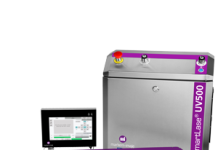According to Laurel Brunner, writing for the Verdigris project, workflow automation, whereby data flows to a plate or press seamlessly and with minimal human intervention, still fills too many printers with fear.
They are in the data business, and yet are reluctant to commit to technologies that ensure the data on a substrate is accurate. Printing companies have embraced digital processing early on and have expanded on the back of process control and automation. They understand that serving customers requires anticipation of changing needs, from personalised postcards to custom packaging.
Leading into the twilight zone of my career in the graphics industry has led me to some curious ponderings. Some of them, like the early days working with Apple and Adobe, have been shamelessly nostalgic. But others have been laced with deep frustration. The frustration comes from the fact that we haven’t made faster progress to advance the industry, as it lumbers into the digital age. The stand out annoyances are automated colour management and recycling, both of which have a profound impact on the environmental impact of print.
Recycling is a much harder nut to crack than getting data onto a substrate, but the same principle applies. Recycling requires complex changes in raw material supply chains and anticipation of what is required to take used product and turn it into something new. The paper industry reprocesses a mixture of different types of printed products sourced from homes, factories, municipal facilities and elsewhere. There is no control whatsoever in the type of prints that make up these mixtures, so they are inevitably blends of materials printed using different printing methods from gravure and flexo to digital. This really shouldn’t matter because processing technology for recycling should align with technical advances in print.
But for the pulp and paper industry it does matter. It matters a lot because the mix includes printed papers made up different compositions that needs new processing methods and the associated investment. Traditionally the mix has been mostly mechanical pulp fibres based on wood, but printing technology advances mean the percentage woodfree pulp fibres is steadily increasing. Prints sent for recycling will not necessarily be deinkable using methods designed for mechanical pulp and old style offset printing. Such prints will generally fail the industry’s favourite test for deinkability as outlined in ISO 21993. This document describes a deinking test method developed decades ago by INGEDE, an industry association for deinking.
The good news is that ISO is developing a document that describes another test method for mixtures of mechanical and wood free papers. This will far better reflect industry reality and hopefully encourage pulp and paper mill owners to invest in their own futures. The alternative is more waste paper being incinerated rather than recycled, something no one wants.
This article was produced by the Verdigris Project, an industry initiative intended to raise awareness of print’s positive environmental impact. Verdigris is supported by: FESPA (www.fespa.com), Fujifilm (www.fujifilm.com/sustainability/), HP (www.hp.com), Kodak (www.Kodak.com/go/sustainability), Practical Publishing (www.practicalpublishing.co.za), Miraclon (https://miraclon.com), Unity Publishing (http://unity-publishing.co.uk) and Xeikon (www.xeikon.com).
THE VERDIGRIS PROJECT
http://verdigrisproject.com/





















